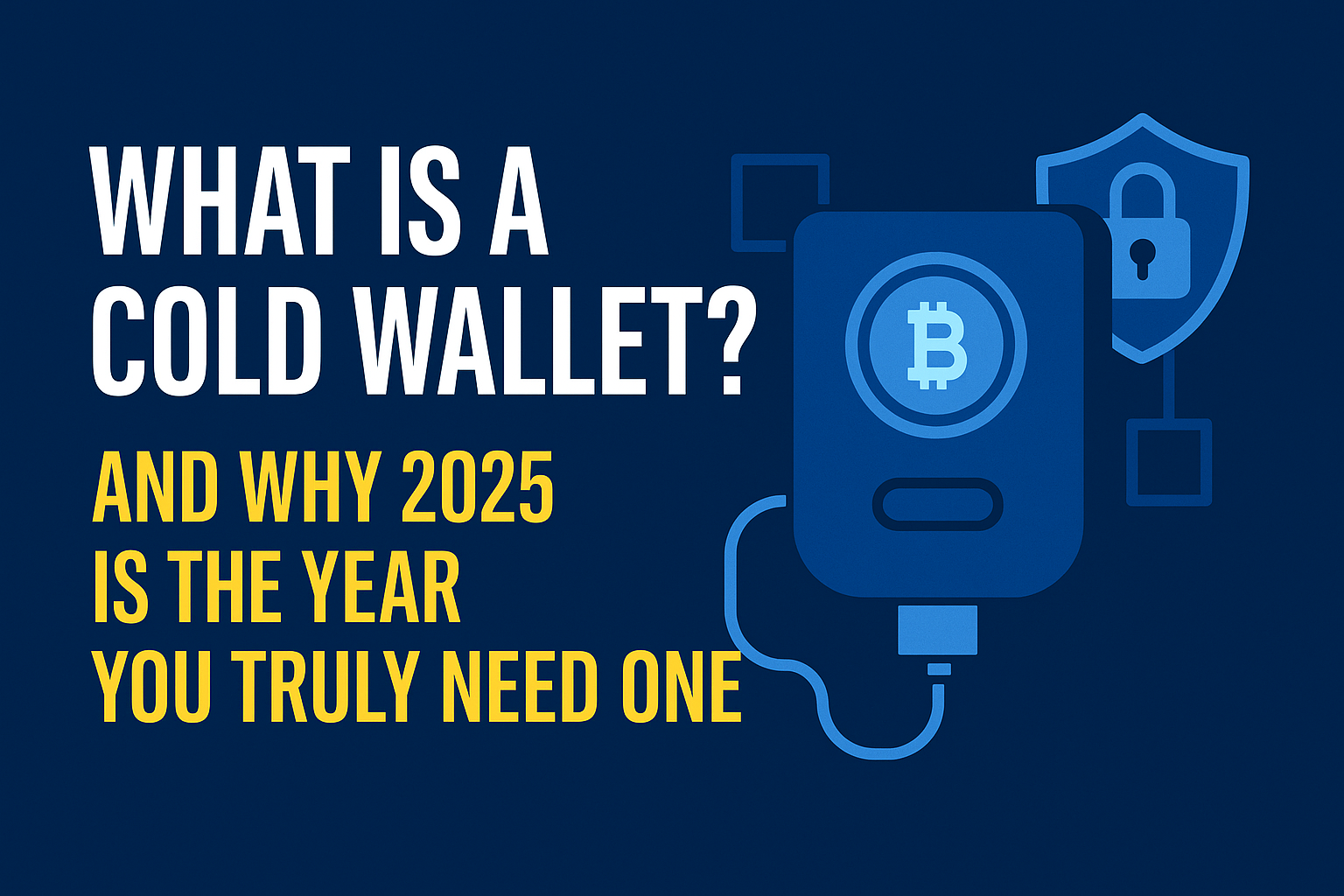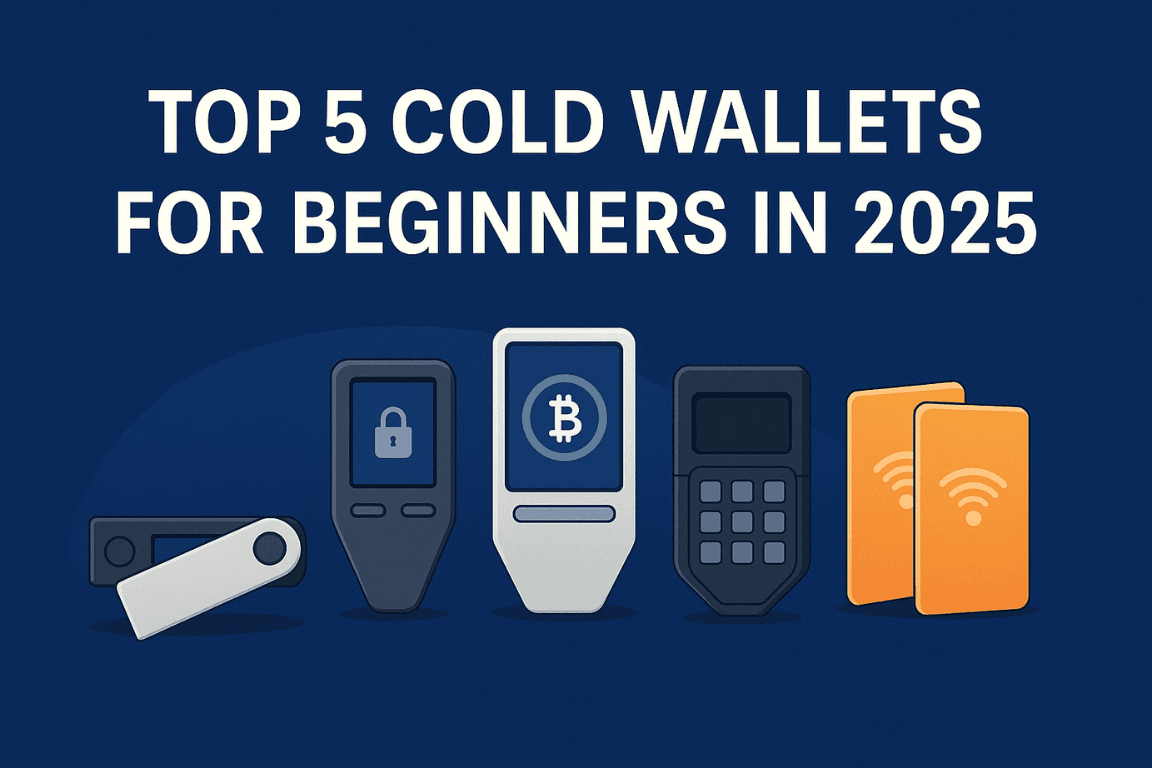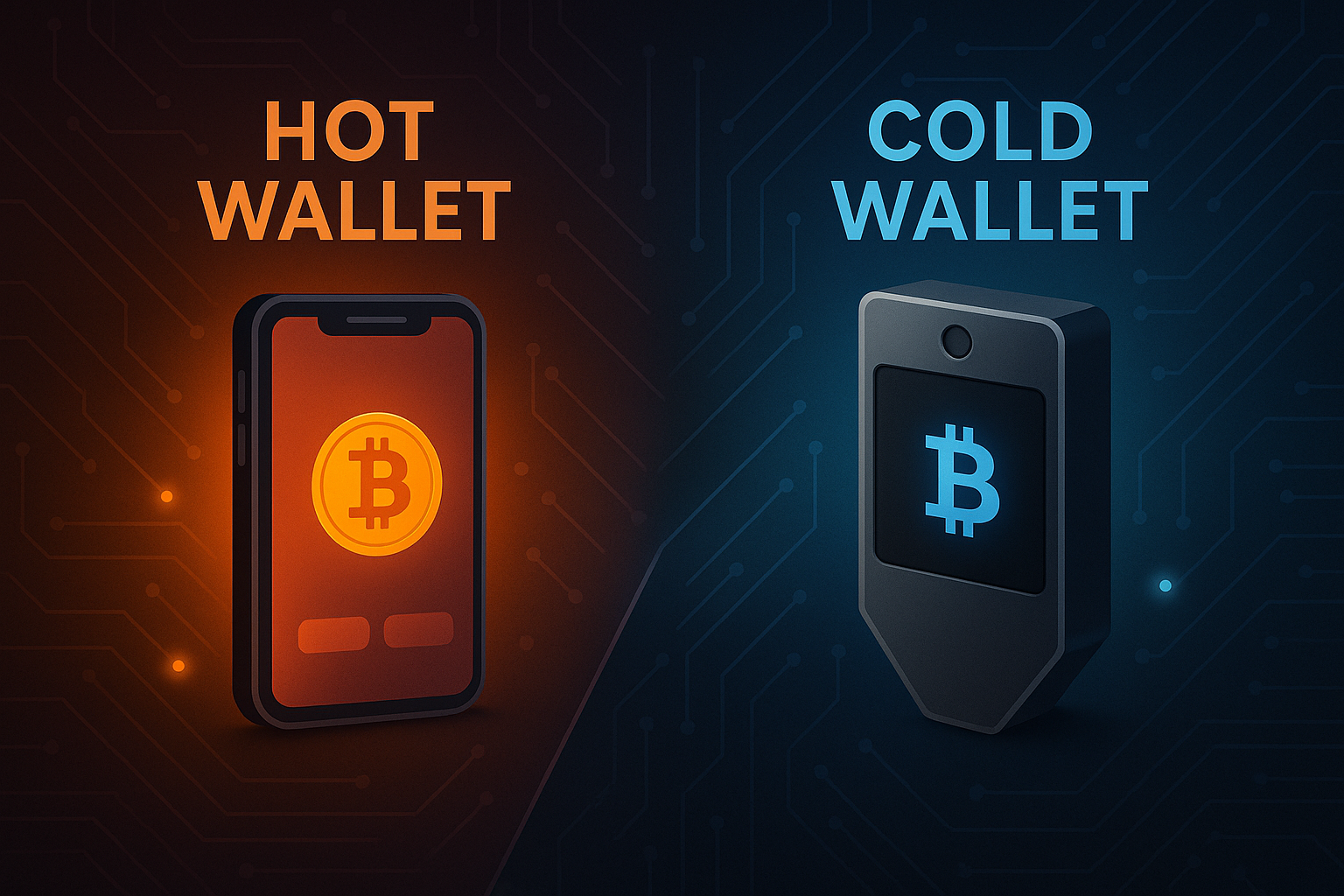Introduction
Imagine losing all your crypto in a few seconds—hackers strike, your hot wallet gets compromised, and poof—your assets are gone. That’s exactly what drives the urgency of using a cold wallet. In 2025, as digital threats escalate and more beginners enter the crypto space, offline storage is not just optional—it’s essential.
What Is a Cold Wallet?
A cold wallet (also called cold storage) is a crypto wallet that stores your private keys completely offline, making it immune to online threats like hacking, phishing, or malware
Unlike hot wallets—apps or web-based wallets connected to the internet—cold wallets isolate your private keys from any online exposure. They are often hardware devices (USB-like devices) or paper/air‑gapped wallets with no internet connection at all.
Why Use a Cold Wallet in 2025?
A. Rising Crypto Threat Landscape
Crypto theft continues to surge: over $2.6 billion was lost in hacks in 2024 alone. Even seasoned traders and influencers face threats—not just online, but offline violent “wrench attacks” as criminals resort to physical coercion to steal private keys.(efinancediary)
B. Surge of New Crypto Users
2025 sees millions of first-time crypto investors entering the ecosystem each month. They’re risk‑averse and desperate for security, often searching queries like “what is a cold wallet” or “how to use Ledger”.
C. Multi‑Chain Complexity & Long‑Term HODLing
With DeFi expansion and Layer‑2 rollups, users hold an array of assets across blockchains (e.g., Bitcoin, Ethereum, Solana, NFTs, staking tokens). Cold wallets supporting multi-chain and staking are indispensable in 2025.
Types of Cold Wallets & Real‑World Examples
| Type | Description | Popular Models 2025 |
|---|---|---|
| Hardware Wallets | Offline devices (USB-style) with secure chips and transaction signing screens |
Ledger Nano X, Trezor Safe 5, Cypherock X1, Ellipal Titan 2.0 |
| Air‑gapped Devices | Wallets using QR codes or NFC—never connect to internet, ideal for ultra-secure setup |
Arculus, Keystone 3 Pro |
| Paper / Metal Wallets | Printed or engraved seed phrases for long-term offline storage |
Paper wallets, steel backups |
Key Benefits You Should Know
- Offline private key storage = High‑level security against online hacks, malware, or phishing attempts
- Self‑custody control—no third party can freeze or access your holdings
- Air‑gapped signing prevents smart contract scams and malicious DApp approvals
- Perfect for long‑term holders (HODLers)—ideal for assets kept offline for months or years
Cons to be aware of:
- Initial cost and physical management risk (loss, damage)
- Not ideal for frequent day-to-day trades (best paired with a hot wallet)
How to Set Up a Cold Wallet Safely
- Always buy hardware wallets from official sources (not used or third party)
- Set up your device offline: generate PIN, recovery phrase; never store seed phrase digitally
- Backup recovery phrase securely (e.g., in a fireproof safe or metal plate)
- Transfer crypto from exchange or hot wallet carefully; verify addresses twice
- For enhanced protection, use extra features: Secure Element chips, biometric safeguards, duress PINs, multi‑sig wallets
Why 2025 Is the Critical Time to Get Your First Cold Wallet
- Cyber threats are evolving—2025 sees smarter phishing, malware, and social engineering schemes
- Regulation uncertainty: self-custody mitigates risk if exchanges get regulated or shut down
- NFTs, DeFi & token staking mean long-term holdings across many chains—only cold storage can safely support them
- First-time crypto buyers in 2025 prioritize ease of use and security—making beginner-friendly cold wallet guides more valuable and in demand than ever.
Frequently Asked Questions
Final Thoughts (And a Soft Recommendation)
Cold wallets are your first line of defense in preserving your crypto wealth in 2025. Whether you’re a new investor just stepping in or a seasoned HODLer preparing for the next bull run, the decentralized nature of crypto demands self-custody—keeping your private keys truly yours.
If you’re considering a Ledger Nano X or Trezor Safe 5, they are secure, well-supported devices that thousands trust. You can learn more or purchase through trusted links for peace of mind and proven affiliate options.
Don’t wait until it’s too late. Secure your digital assets today—because if you don’t own the keys, you don’t own the coins.
References
- Definitions & why you need a cold wallet — industry overviews from this breakdown, this guide, and this explanation.
- Security tips & setup process — practical tips covered in this article.
- Cold wallet rankings & 2025 best picks — summarized by this review and this ranking.
- Physical attack trends & offline threats — discussed in this report.



